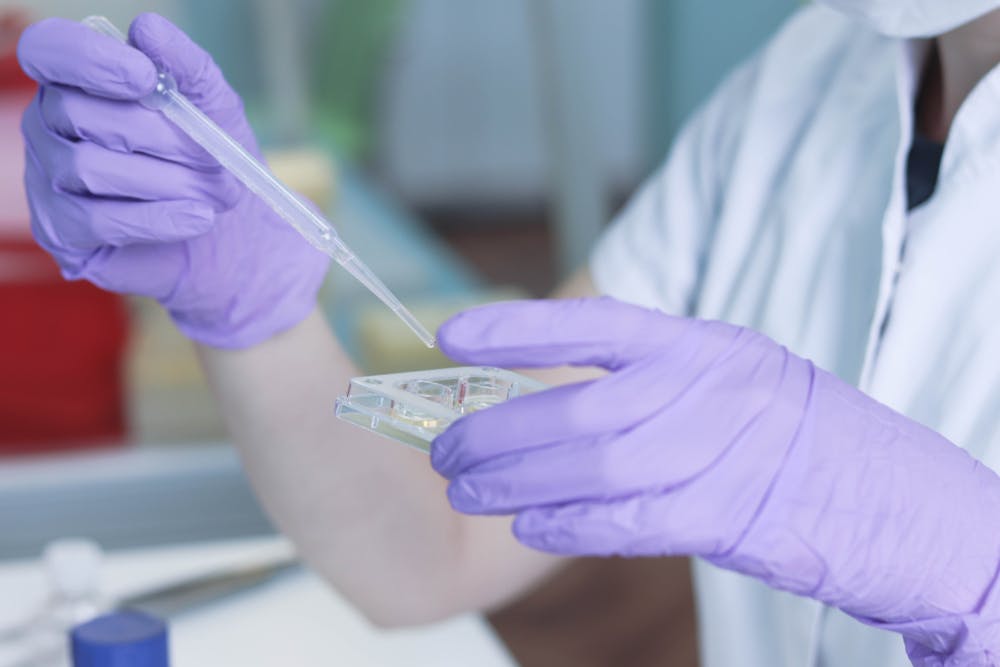Reproductive endocrinologists and fertility patients alike are constantly seeking ways to improve implantation, pregnancy and ultimately live birth rates following in vitro fertilization (IVF). One tool at their disposal is an embryo transfer medium.
Not sure how to integrate this medium into your practice? Read on for an overview of the benefits of a transfer medium and an explanation of how it is used during a transfer.
What Is an Embryo Transfer Medium?
Simply put, a transfer medium is a liquid added to the catheter used to transfer an embryo during an IVF cycle. This liquid contains hyaluronan, a naturally occurring polysaccharide found in the uterus and other parts of the reproductive tract. In the body, the concentration of this molecule increases in the uterus during the implantation window and then returns to normal levels.
A standard embryo transfer medium contains low doses of hyaluronan. However, studies have consistently shown that when the medium contains high doses of hyaluronan, implantation and pregnancy rates improve in both fresh and frozen transfer cycles. One such product on the market, EmbryoGlue from Vitrolife, is comprised of a high dosage of hyaluronan and recombinant human albumin.
Like hyaluronan, human serum albumin (HSA) occurs naturally in the body. However, serum-derived HSA can negatively impact embryo development. Synthetically produced recombinant human albumin, on the other hand, is both more effective and safer for women because it's designed to be contaminant-free.
Benefits of Using an Embryo Transfer Medium
Beyond implantation and pregnancy rates, an embryo transfer medium — thanks to hyaluronan — offers the following benefits:
- Cryosurvivability: When combined with recombinant human albumin, hyaluronan improves the rate at which embryos survive after being frozen and thawed.
- Embryo development: Extra hyaluronan supports an embryo's healthy progression while the embryo is cultured in vitro prior to implantation.
- Live birth rate: A 2014 Cochrane review shows EmbryoGlue specifically offered patients an 8 percent increase in live births.
How Hyaluronan Promotes Implantation
The use of a high concentration of hyaluronan has been shown to provide a higher viscosity compared to a medium containing only proteins. This increase facilitates the dispersal of the embryo into the uterus. Additionally, hyaluronan increases the adhesion of cell-to-cell bonds, which improves the ability for the embryo to attach to the endometrial lining. The exclusive expression of glycoprotein CD44 (a receptor for hyaluronan) and increased hyaluronan production overall during the mid-to-late luteal phase make this compound a crucial component of the implantation process.
A study published by theAssociation of Clinical Embryologists found that the use of hyaluronan growth media on an embryo prior to transfer can increase the chance of a successful pregnancy. This happens through the stimulation of genes that create a favorable environment for implantation.
Preparing for the Embryo Transfer
The day before an embryo transfer, an embryologist prepares a dish with the medium in the center. The dish is then equilibrated for up to 18 hours overnight in an incubator.
The next day, between 10 and 30 minutes before the transfer, the embryologist moves the embryo from the culture dish to the pre-equilibrated dish containing the medium. Using a syringe, the embryo is placed into the catheter that will be used during the transfer.
With the help of ultrasound guidance and a patient's full bladder, the reproductive endocrinologist inserts the catheter through the cervix and places the embryo, surrounded by the medium, into the uterus. Although more research is needed, the use of an embryo transfer medium shows great promise.


